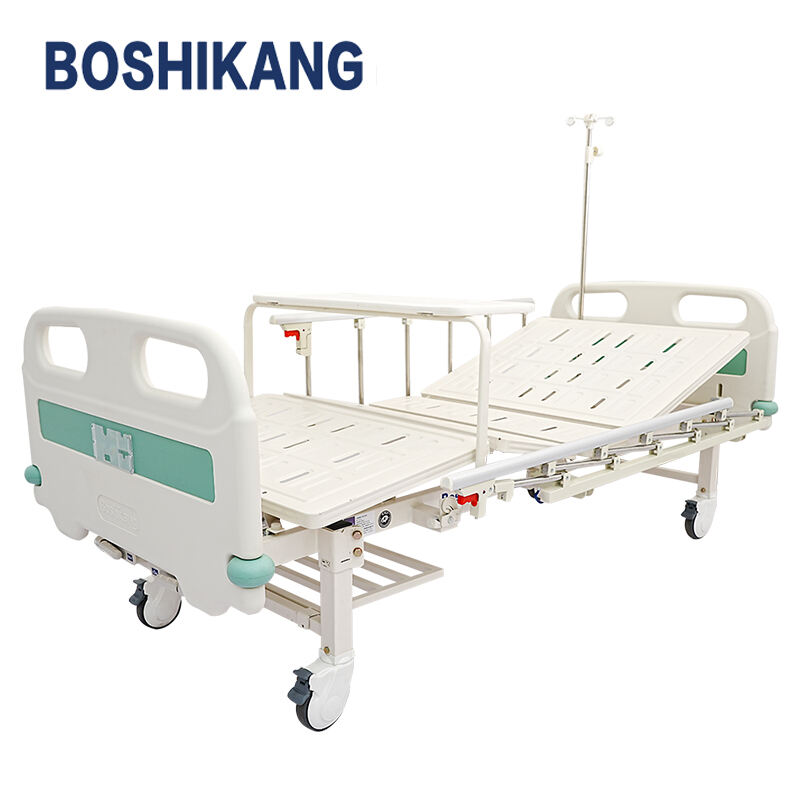Introduction: Importance of Bedside Cabinets in Medical Settings
Bedside cabinets, often referred to as bedside cabinets for medical use, play a crucial role in healthcare environments. These specialized pieces of furniture enhance patient care by offering a convenient place for storing personal items, medications, and medical supplies within easy reach. Their significance extends beyond mere storage; they contribute to the overall organization and efficiency of healthcare settings. By facilitating easier access to necessary items, bedside cabinets support healthcare professionals in delivering timely care, thus improving patient outcomes and streamlining day-to-day operations in hospitals and clinics.
Essential Features to Look for in a Bedside Cabinet for Medical Use
When selecting a bedside cabinet for medical use, considering the material and durability is crucial. High-quality materials such as metal, wood, and plastic are most commonly used in construction. Metal offers strength and resistance to impact, making it a durable option; however, it can be cold and less appealing aesthetically. Wood provides a classic appearance but might require more maintenance. Plastic cabinets are lightweight, easy to clean, and resistant to moisture but might not offer the same durability as metal or wood. Choosing durable materials can significantly reduce long-term costs in healthcare settings by minimizing the need for frequent replacements.
Storage capacity is another vital aspect to consider. Bedside cabinets in medical environments need to accommodate various items like medications, medical instruments, and patient personal effects. A well-designed storage solution can greatly improve workflow efficiency for healthcare providers by ensuring that all necessary items are readily accessible. Moreover, the size and configuration of the cabinets should be ideal for fitting into small patient rooms without compromising on storage space, which is especially important in maximizing room functionality and comfort.
Mobility and accessibility features are also essential for a versatile bedside cabinet. Mobile cabinets equipped with wheels or casters enable easy relocation and flexibility, making them suitable for various medical settings. This mobility allows healthcare workers to bring necessary supplies directly to the patient's side without delay. Furthermore, adjustable heights and easy-open drawers add to the accessibility of these cabinets, ensuring they cater to the diverse needs of patients and caregivers efficiently.
Lastly, safety and stability are paramount features to consider. In fast-paced environments like hospitals, stable and secure bedside cabinets help prevent accidents, thereby enhancing patient and staff safety. Features such as anti-tip design and non-slip surfaces contribute significantly to the stability of these cabinets. Studies show that implementing high-standard safety features in medical furniture can positively impact patient and staff satisfaction by reducing risks and enhancing the overall care quality.
Different Types of Medical Bedside Cabinets
When choosing bedside cabinets for medical facilities, understanding the distinctions between fixed and mobile cabinets is essential. Fixed cabinets are designed to remain stationary, offering stability and durability, which is ideal for environments with frequent bustling activities. These cabinets excel in storing essential medical supplies securely in one place, ensuring easy access during emergencies. However, the trade-off is their lack of flexibility; they cannot be moved as the need arises. Conversely, mobile cabinets, equipped with wheels or casters, provide the flexibility to be relocated across different rooms or floors, adapting to the dynamic needs of healthcare environments. They are particularly beneficial in settings like makeshift medical tents during emergencies or temporary pop-up clinics, where adaptability is crucial. While the mobility of these cabinets is a significant advantage, they must be complemented with features to ensure stability and safety during movement.
Multi-functional designs in medical bedside cabinets are another essential aspect to consider. These cabinets often incorporate features such as integrated drawers, trays, and waste disposal slots, collectively enhancing their utility in healthcare settings. The convenience of having everything in one place means healthcare providers can perform their tasks more efficiently, saving valuable time. Furthermore, in today’s tech-driven healthcare landscape, cabinets that integrate charging ports for devices like tablets and smartphones are becoming increasingly valuable. Such features can significantly boost operational efficiency by ensuring that essential devices are always charged and ready for use. Additionally, space-saving designs prove advantageous in small clinical areas, effectively utilizing limited space without compromising on functionality. These cabinets not only cater to modern healthcare needs but also underscore the importance of innovative design in enhancing patient care and improving workflow efficiency.
Best Practices for Selection & Maintenance of Bedside Cabinets
Selecting the right bedside cabinet for healthcare settings involves thorough assessment of healthcare needs and inputs from the staff who will be using them. Engaging the staff in the decision-making process ensures the selected cabinets meet practical requirements and enhance work efficiency. It is essential to consider the space available, the cabinet's functionality, and its compatibility with other medical equipment.
Regular maintenance is crucial to ensure the longevity and functionality of bedside cabinets. Implementing protocols for cleaning and inspecting cabinets regularly can prevent issues such as contamination and wear. This includes wiping surfaces with appropriate disinfectants and checking hardware for any damages or wear. This proactive approach is vital in maintaining hygiene and safety standards in medical environments.
Staying updated with advancements in bedside cabinet design and materials can significantly impact the selection process. Innovations can offer improved durability, ease of use, and additional features such as built-in charging ports for medical devices. Keeping abreast with these changes ensures that the healthcare facility remains at the forefront of functionality and patient care.
Conclusion & Recommendations
In summary, selecting the right bedside cabinet for medical use involves considering key features such as functionality, mobility, storage capacity, materials, and design. It is recommended to conduct thorough research and involve relevant stakeholders in the selection process to ensure that the chosen cabinet meets the specific needs of healthcare environments effectively. By doing so, facilities can enhance patient care and operational efficiency.
FAQ
Why are bedside cabinets important in medical settings?
Bedside cabinets are important in medical settings as they provide a convenient place to store personal items, medications, and medical supplies, aiding healthcare professionals in delivering timely and organized care.
What materials are best for bedside cabinets in healthcare?
High-quality materials such as metal, wood, and plastic are typically used. Metal offers strength, wood provides a classic appearance, and plastic is lightweight and easy to clean.
How do mobile bedside cabinets enhance healthcare efficiency?
Mobile bedside cabinets, equipped with wheels, allow for easy relocation, enabling healthcare workers to bring necessary supplies directly to the patient's side quickly, enhancing operational efficiency.


